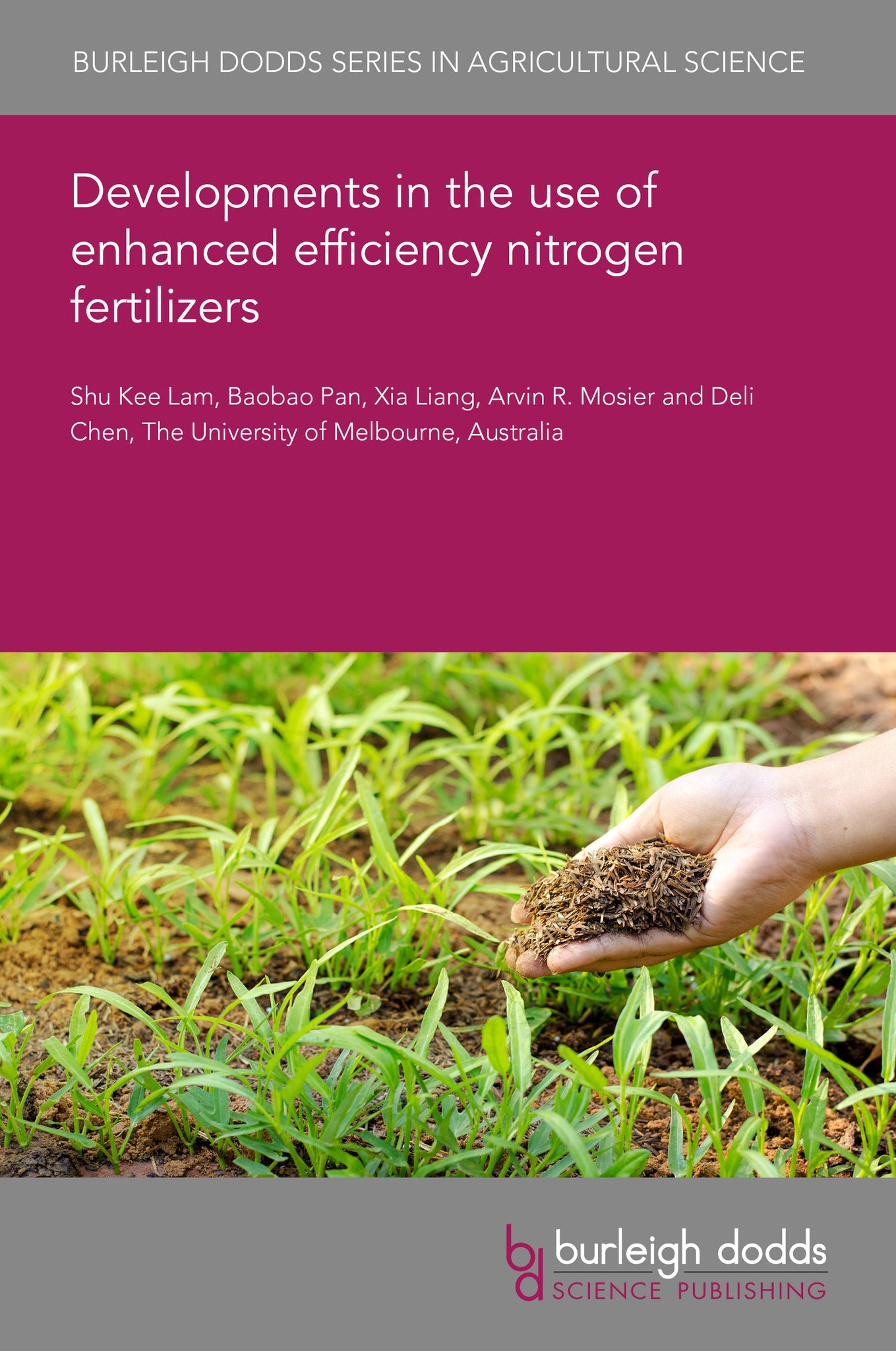We're sorry. An error has occurred
Please cancel or retry.
Developments in the use of enhanced efficiency nitrogen fertilizers

Some error occured while loading the Quick View. Please close the Quick View and try reloading the page.
Couldn't load pickup availability
- Format:
-
14 March 2024

To sustainably feed a growing population, we need to increase the efficiency of nitrogen (N) fertilizers while reducing their negative impacts on the environment. Enhanced efficiency fertilizers (EEFs) show promise in reducing the loss of reactive N (Nr: all species of N except N2) to the environment. EEFs work by inhibiting the activities of enzymes involved in soil N processes (urease and nitrification inhibitors) and regulating the release of N from fertilizers in response to soil and environmental conditions (controlled-release fertilizers). However, the limitations of currently available EEFs have not been well addressed. Further research efforts from multi-disciplinary expertise are needed to make a breakthrough. It is important to consider the negative impacts of Nr loss on human and ecosystem health and to monetize the avoided societal costs from using EEFs to incentivize their adoption. This will avoid enormous spending on cleaning up Nr pollution while ensuring global food security.

TECHNOLOGY & ENGINEERING / Agriculture / Sustainable Agriculture, Agronomy and crop production, TECHNOLOGY & ENGINEERING / Agriculture / Agronomy / Crop Science, SCIENCE / Environmental Science, Sustainability, Sustainable agriculture, Agricultural science

- 1 Introduction
- 2 Use of enhanced efficiency fertilizers
- 3 Performance of enhanced efficiency fertilizers
- 4 Development of new generation enhanced efficiency fertilizers
- 5 Enhanced efficiency fertilizer adoption: societal costs and benefits
- 6 Conclusion and future trends in research
- 7 Where to look for further information
- 8 References



